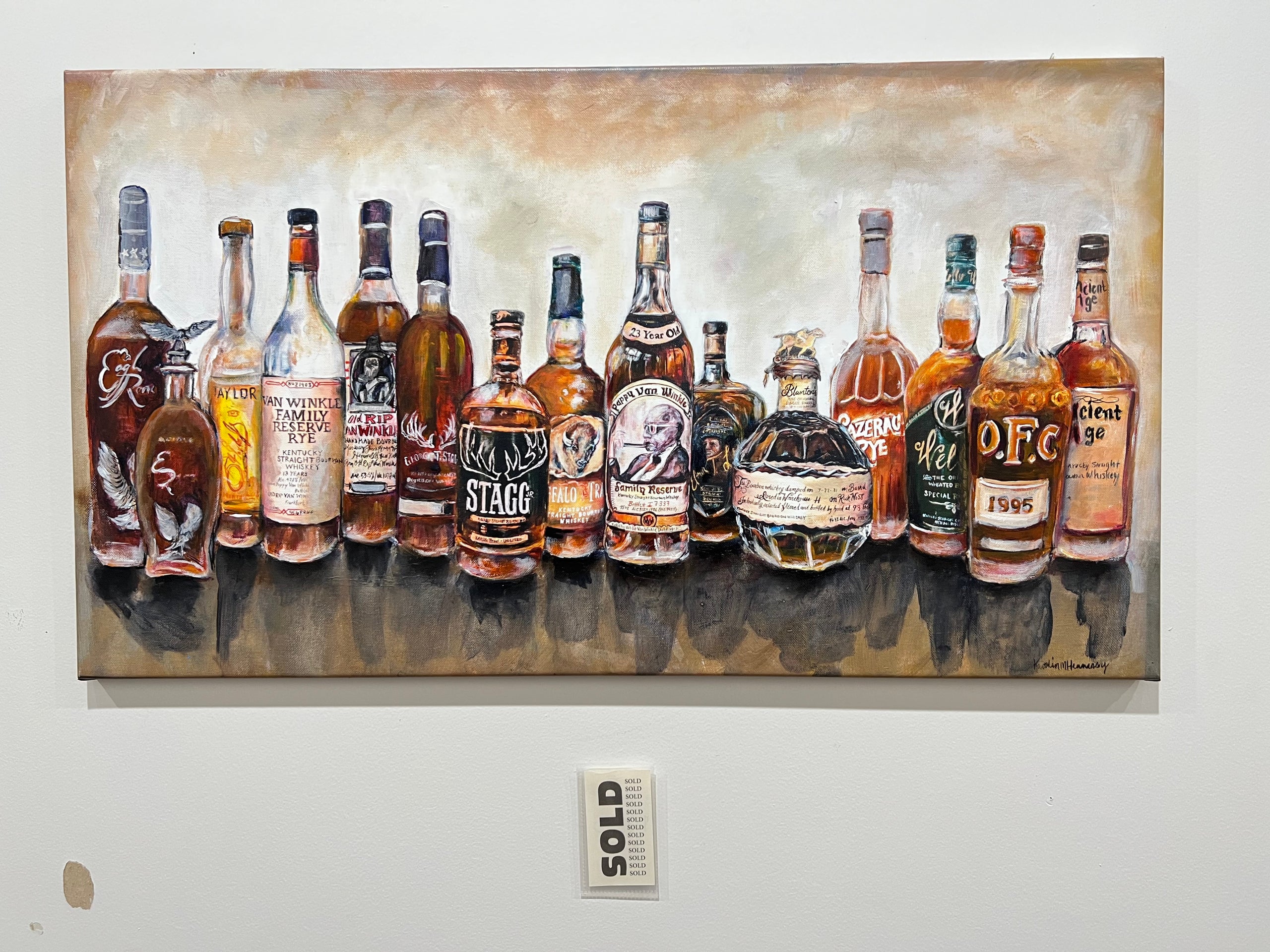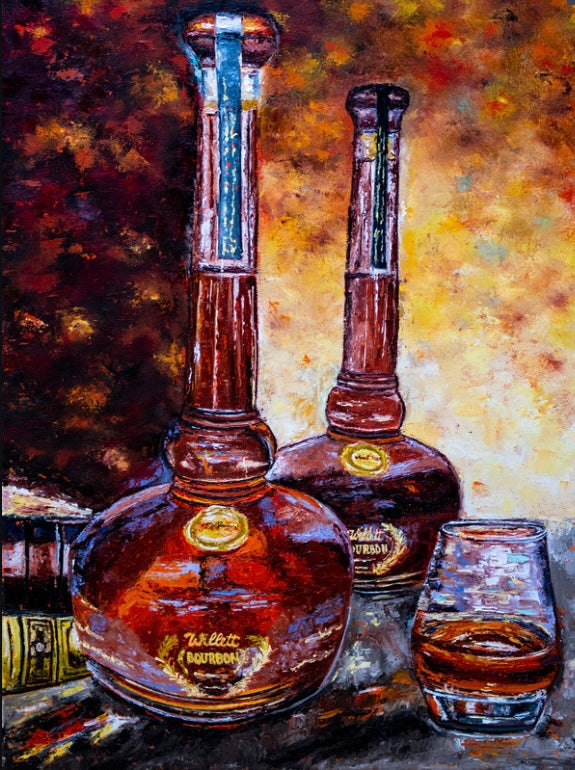Realism Art in the Whiskey Market: Depicting Moments of Distillation
Wiki Article
The Relevance of Whiskey Art in Celebrating Heritage and Workmanship in the Beverage Sector
The detailed connection in between scotch art and the party of heritage and workmanship within the beverage market can not be overstated. With attentively made labels and containers, bourbon brand names encapsulate their historic roots and the artisanal skills that specify their production techniques.The Historic Origins of Whiskey
At the heart of whiskey's allure exists a rich tapestry of historical roots that trace back to old worlds. The origins of whiskey can be linked to the distillation methods of the Sumerians and Babylonians around 2000 BCE, where early kinds of fermented grain drinks began to arise. It was in the Middle Ages that the art of distillation advanced significantly, especially in Ireland and Scotland, leading to the production of bourbon as we understand it today.
The term "whiskey" itself stems from the Gaelic word "uisce beatha," implying "water of life." This phrase underscores the social significance of bourbon in Celtic societies, where it was typically connected with rituals, events, and communal bonding. By the 15th century, distillation came to be a recognized craft within monastic areas, leading the way for the establishment of legal distilleries.
As trade routes expanded, scotch's popularity expanded, going beyond regional borders and recording the interest of connoisseurs worldwide. Whiskey Art. This historical journey mirrors not just the craftsmanship behind bourbon production yet also its indispensable duty in social and cultural contexts, noting it as a considerable drink throughout background
Artistic Expression in Branding
Whiskey branding stands as an engaging crossway of creativity and commerce, where visual identity plays an essential role in forming customer perception. The aesthetics of scotch labels, product packaging, and marketing products reflect not only the brand name's tale yet also its core worths and heritage. Via creative expression, distilleries convey a narrative that reverberates with consumers, evoking emotions and triggering connections.The use of shade, typography, and imagery in branding offers to distinguish items in a saturated market. Standard concepts might stimulate a sense of authenticity and workmanship, while contemporary styles can represent development and forward-thinking. This strategic creative direction boosts brand name recognition and loyalty, permitting customers to build an individual partnership with the whiskey they select.
In addition, imaginative expression in branding frequently acts as a party of regional heritage. Distilleries frequently integrate regional icons or historical references into their styles, creating a feeling of location that invites customers to take part in a wider social experience. Ultimately, the virtuosity behind whiskey branding not just boosts aesthetic allure but additionally improves the overall narrative of the brand, promoting a deeper recognition for the workmanship and heritage ingrained in each bottle.
Workmanship in Container Layout
The artistry obvious in scotch branding prolongs beyond visual identification to incorporate the craftsmanship associated with container layout. Each container acts as a vessel not just for the spirit within, yet also for the story it informs concerning its beginning, high quality, and tradition. The style process calls for precise attention to detail, as aspects such as form, closure, and material contribute considerably to the overall assumption of the scotch.Craftsmanship in bottle style entails choosing high-quality glass that can improve the scotch's color and quality, while additionally supplying a responsive experience for the customer. The silhouette of the bottle have to be both useful and aesthetically enticing, typically showing the heritage of the brand name. Lots of distilleries choose one-of-a-kind forms or printed logos that evoke a feeling of authenticity and background.
Moreover, the tag layout and typography play an essential duty in connecting the brand's story. Whiskey Art. A well-crafted bottle not only mesmerizes the customer's eye however also reinforces the brand's commitment to top quality and practice. This way, the workmanship of container style ends up being an important aspect of the bourbon experience, combining artistry with a profound respect for heritage
Cultural Relevance of Whiskey Art
Commemorating tradition and craftsmanship, the social value of scotch art goes beyond plain aesthetic appeals, intertwining with the historic and social stories of the areas where it originates. Each bottle offers as a canvas, portraying the distinct tales, folklore, and traditions that have shaped regional whiskey-making methods. The detailed styles often show the heritage of the distillers, integrating symbols and concepts that resonate with the society and values of their neighborhoods.
In enhancement, bourbon art plays a crucial moved here role in public gatherings and celebrations, offering as a substantial link in between individuals and their shared experiences. By appreciating the creativity in bourbon product packaging, consumers grow a much deeper understanding and respect for the craft, eventually improving their pleasure of the drink itself.
Modern Trends in Whiskey Presentation
In the last few years, the presentation of whiskey has developed to mirror modern tastes and patterns while still honoring standard workmanship - Whiskey Art. Distilleries are significantly concentrating on aesthetic components that improve the overall alcohol consumption experience, bridging the space in between heritage and modernityIngenious bottle styles have actually arised, usually including lasting products and imaginative tags that inform compelling stories. Many brands now team up with neighborhood artists, instilling their items with distinct visual expressions that reverberate with customers. Additionally, limited-edition launches are typically packaged in collectible containers, including worth and allure for connoisseurs.

Conclusion
In final thought, whiskey art offers as an essential conduit for sharing the heritage and workmanship fundamental in the beverage sector. With detailed branding, ingenious bottle designs, and culturally considerable imaginative components, scotch brand names successfully honor their practices and link with consumers.
Workmanship in container layout involves selecting premium glass that can boost the bourbon's basics color and clearness, while also giving a tactile experience for the consumer. In this way, the workmanship of bottle design becomes an essential element of the scotch experience, combining artistry with a profound regard for heritage.
In final thought, whiskey art offers as an essential avenue for expressing the heritage and craftsmanship inherent in the drink sector.
Report this wiki page